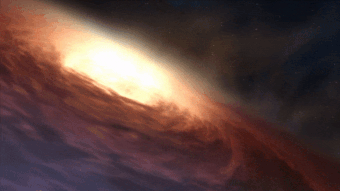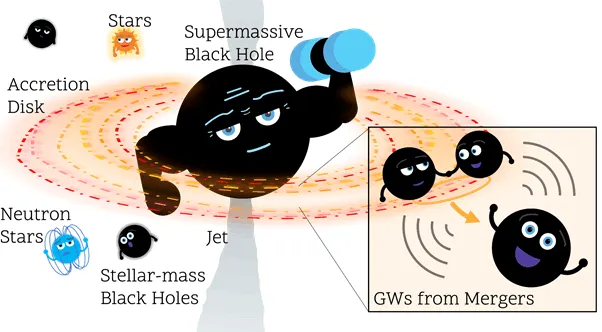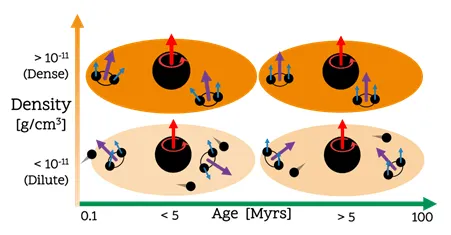The universe contains many black holes of different sizes. Although the mass of stellar black holes is 10-50 times that of our sun, supermassive black holes are millions or even billions of times that of our sun These supermassive black holes (SMBHs) are so large that they can (to a considerable extent *) become the center of their galaxies Their gravity pulls stars, neutron stars and smaller black holes into orbit around them.

Gravity also pulls the surrounding gas and dust into a spiral orbit, and its end point must be SMBH. As the gas rotates, it becomes hot due to friction and can even produce a bright radiation "jet". Rotating gases are called accretion disks. These accretion disks may be very thick and can even hide some celestial bodies in them. Unfortunately, what happens between celestial bodies in the accretion disk is hidden to us - our eyes can't see through these gas "curtains". However, the gravitational waves generated by the merger of these objects help solve the mystery: they pass through the gas "curtain", allowing scientists to study the accretion disk and the merged objects at the same time.

Scientists have been simulating objects in accretion disks to understand how many mergers can take place in these accretion disks and what direction the objects are before merging. Based on these simulations, scientists built a "model" to study the age and density of accretion disks.
Active galactic nuclei (AGNs) are promising environments for the assembly of merged binary black hole (BBH) systems. After detecting gravitational waves from a BBH system with a pair of allegedly unstable mass gaps, interest in AGNs as a "nursery" for merging BBH is rising, most notably gw190521. Active galactic nuclei are also used to explain the formation of high mass ratio systems, gw190814.

Based on the simulation of BBH system in AGN, scientists put forward a phenomenological model of black hole spin distribution of merging binary stars in AGN disk. The model contains some obvious features, which makes it possible to distinguish AGN channel from other channels. The parameters of the model can be heuristically mapped to the age and density of AGN disk. Scientists estimate the extent to which different merging groups in AGNs can be distinguished. If most merged black holes are formed in AGNs, future gravitational wave observations may provide insight into the dynamics of AGN disk.